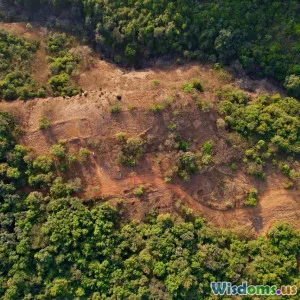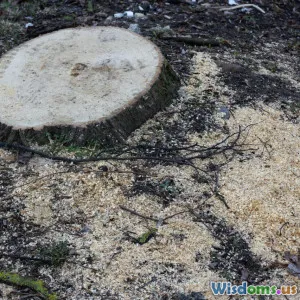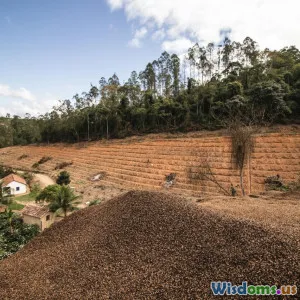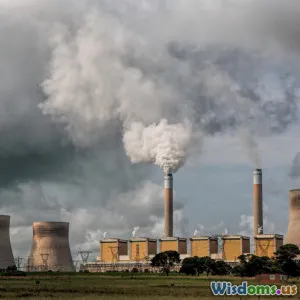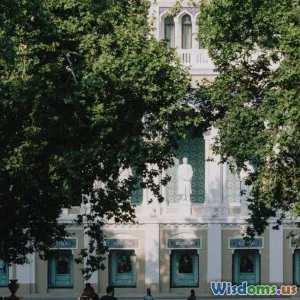
Seven Surprising Benefits of Urban Reforestation Projects
7 min read Discover seven unexpected perks of urban reforestation that transform city life beyond just planting trees. (0 Reviews)
Seven Surprising Benefits of Urban Reforestation Projects
Urban reforestation is often seen as a simple act of planting trees in cities to beautify landscapes or fight pollution. But the benefits extend far deeper, weaving through ecological, social, and economic fabrics, transforming urban areas in ways many wouldn't expect. From mental wellness to economic revitalization, these projects offer multifaceted advantages that challenge preconceived notions of urban greenery. Let’s delve into seven surprising benefits that highlight why cities worldwide are embracing the power of urban forests.
1. Significantly Improving Air Quality Beyond Expectations
While it’s widely known that trees absorb carbon dioxide, urban trees play a critical role in filtering air pollutants such as nitrogen dioxide, ozone, and particulate matter. Research published by the U.S. Forest Service notes that urban forests in the United States remove an estimated 17.4 million tons of pollution annually, equaling a $6.8 billion economic benefit in healthcare cost savings.
Moreover, strategic planting of native tree species can act as natural air purifiers near busy roads and industrial zones. Cities like London and New York have incorporated 'green barriers' to reduce airborne toxins by up to 50%, improving lung health, particularly in children and elderly populations.
2. Boosting Mental Health and Community Well-being
Urban reforestation projects have demonstrated profound effects on mental health. Exposure to green spaces helps reduce stress, anxiety, and depression. A landmark study from the University of Essex found that people living in greener urban areas report up to 18% higher levels of well-being.
In Chicago, the ‘Nature Prescription’ program encourages visits to urban forests to aid patients with depression. Participants often report not only emotional relief but increased social interaction, combating urban isolation and fostering social cohesion.
3. Enhancing Urban Biodiversity and Resilience
Contrary to the concrete jungle stereotype, urban forests provide habitats for a wide array of flora and fauna, supporting biodiversity within city limits. Cities like Singapore have earned the nickname “City in a Garden” through comprehensive reforestation that encourages native bird species, pollinators, and small mammals.
These ecosystems increase urban resilience against climate change by promoting ecological balance and natural pest control. Enhanced biodiversity also promotes cleaner soil and water regulation, creating a healthier environment for urban residents.
4. Mitigating Urban Heat Island Effect with Natural Cooling
Concrete and asphalt dominate cityscapes, absorbing and radiating heat, often resulting in urban temperatures several degrees higher than surrounding rural areas. Urban forests, however, provide shade and release moisture through evapotranspiration, significantly reducing ambient temperatures.
Studies from the University of California, Davis, reveal that areas with dense tree coverage cool city temperatures by as much as 7°F (4°C), mitigating heat-related illnesses and reducing energy costs associated with air conditioning.
5. Boosting Property Values and Economic Activity
Urban greenery is no mere aesthetic bonus—it translates directly into economic benefits. Real estate studies across multiple metropolitan areas indicate that properties near well-maintained urban forests can appreciate by 5% to 20%.
For example, Washington D.C.’s extensive tree-lined corridors have drawn businesses and upscale residential developments. Green spaces attract tourism and encourage outdoor commerce such as markets and cafes thriving alongside parks, multiplying urban economies’ vitality.
6. Inspiring Educational Opportunities and Stewardship
Urban reforestation initiatives often serve as interactive classrooms. Cities implement programs involving local schools where students participate in planting trees, learning about ecology first-hand.
Projects like the New York City MillionTrees initiative have trained over 50,000 citizens in urban ecology principles. Such hands-on exposure engenders a lifelong appreciation and stewardship toward environmental care, cultivating future advocates for sustainable urban living.
7. Strengthening Social Equity and Access to Nature
Perhaps one of the most transformative benefits is how urban reforestation addresses social equity. Historically, marginalized communities have had limited access to green spaces, exacerbating health and social disparities.
Reforestation projects intentionally targeting under-served neighborhoods—like Philadelphia’s Tree Tenders program—improve air quality and provide recreational spaces, contributing to healthier and more equitable urban living. Green spaces also promote community engagement, reducing crime rates and fostering a stronger sense of safety and belonging.
Conclusion
Urban reforestation transcends the simplistic idea of planting trees—it is a multifaceted tool capable of reshaping city environments socially, ecologically, and economically. From enhancing public health to bolstering urban biodiversity and fostering equity, the unexpected benefits of these green initiatives compel urban planners, policymakers, and citizens alike to champion more inclusive and strategic tree-planting programs.
As cities continue to grow and face challenges like climate change and urban stress, embracing urban forests represents a time-tested yet innovative path toward resilient, vibrant urban futures. The surprising benefits demonstrated by projects worldwide urge us to see every tree planted not just as greenery, but as a cornerstone to better urban living.
References:
- Nowak, D.J., et al. (2013). Carbon storage and sequestration by urban trees in the USA. Environmental Pollution.
- University of Essex (2018). Nature and mental well-being.
- University of California, Davis (2020). Urban trees and heat island mitigation.
Rate the Post
User Reviews
Popular Posts











